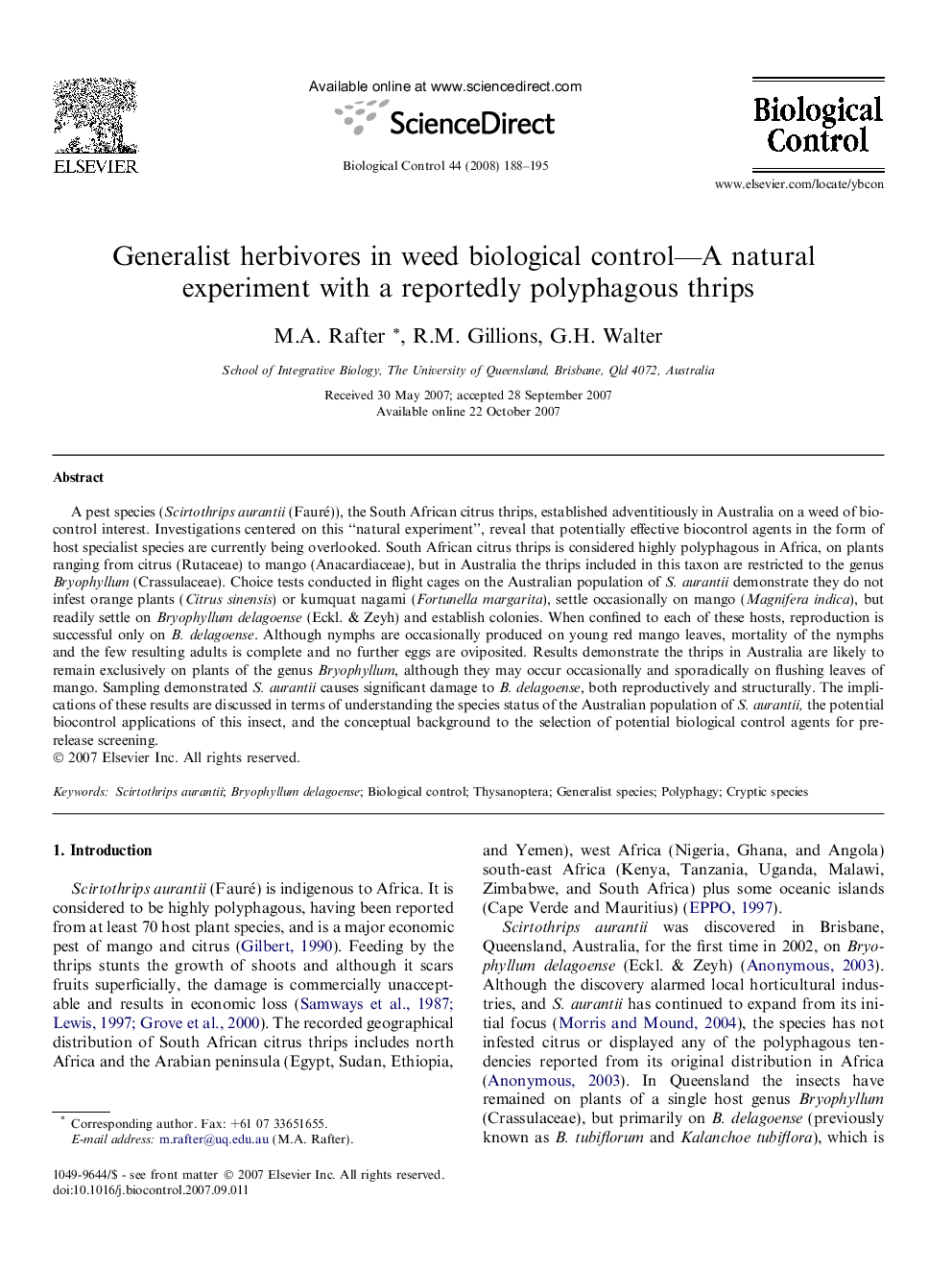| Article ID | Journal | Published Year | Pages | File Type |
|---|---|---|---|---|
| 4504898 | Biological Control | 2008 | 8 Pages |
A pest species (Scirtothrips aurantii (Fauré)), the South African citrus thrips, established adventitiously in Australia on a weed of biocontrol interest. Investigations centered on this “natural experiment”, reveal that potentially effective biocontrol agents in the form of host specialist species are currently being overlooked. South African citrus thrips is considered highly polyphagous in Africa, on plants ranging from citrus (Rutaceae) to mango (Anacardiaceae), but in Australia the thrips included in this taxon are restricted to the genus Bryophyllum (Crassulaceae). Choice tests conducted in flight cages on the Australian population of S. aurantii demonstrate they do not infest orange plants (Citrus sinensis) or kumquat nagami (Fortunella margarita), settle occasionally on mango (Magnifera indica), but readily settle on Bryophyllum delagoense (Eckl. & Zeyh) and establish colonies. When confined to each of these hosts, reproduction is successful only on B. delagoense. Although nymphs are occasionally produced on young red mango leaves, mortality of the nymphs and the few resulting adults is complete and no further eggs are oviposited. Results demonstrate the thrips in Australia are likely to remain exclusively on plants of the genus Bryophyllum, although they may occur occasionally and sporadically on flushing leaves of mango. Sampling demonstrated S. aurantii causes significant damage to B. delagoense, both reproductively and structurally. The implications of these results are discussed in terms of understanding the species status of the Australian population of S. aurantii, the potential biocontrol applications of this insect, and the conceptual background to the selection of potential biological control agents for pre-release screening.
